VR Experience (6DoF)
User Agreement Trailer
The User Agreement project is a single-user VR experience with 6 degrees of freedom,
its main focus is to explore the interactive space of the virtual world, mapping the algorithms' behavior.
its main focus is to explore the interactive space of the virtual world, mapping the algorithms' behavior.
The project's name refers to the consent expressed by the user and obtained by the program. This typically occurs during software installation or accessing an online platform. Traditionally, it involves a lengthy agreement containing notes on possible and accepted ways of using the software, information about code ownership, the publisher's lack of responsibility for damages resulting from usage, and, importantly, the fields and methods of collecting, processing, and sharing user-entered data. The User Agreement project enters into a polemical game, utilizing both the physical display of the project and a digital agreement prepared at the opening level of the experience, exploiting the layer of ambiguity.
The mechanics designed with the intention of utilizing the multisensory nature of the medium and creating a synesthetic experience are connected within a complex system of interactions and interdependent parameters. They aim to expand the possibilities of interacting with the virtual world.
The integration of the participant with the digital object during their involvement in the VR experience and the unique nature of each reproduction contribute to a discussion about the duality of time perception - from both human and non-human perspectives. Two-dimensional screens displaying images in front of the immersed person's eyes, interpreted by their brain as a three-dimensional space, can lead to questions about the nature of holograms and phantoms filling the digital world. Breaking the facade of illusion by abandoning techniques that aim to replicate reality in the 3D world is one of the strategies adopted in creating the virtual experience.
The explanation of the mechanisms of algorithms approaching AGI-level advancement is the second dimension on which the project is based. Involving algorithms in the VR experience design process, including content generated by algorithms concerning their structure and components, as well as their ways of experiencing and perceiving the world, seeks to find elements that converge with technological singularity. Searching for manifestations of self-awareness in the algorithms' responses to posed questions leads to hypotheses about what in this content is falsification, deception, imitation or what we recognize as the system’s consciousness.
User Agreement exhibition at WOK - video
Photos from Reality Bender exhibition in WOK // www.wok.art.pl
June 2023, Warsaw, PL
https://wok.art.pl/dzialania/procesy-artystyczne-i-badawcze/zdarzenia-wirtualne-w-wok/
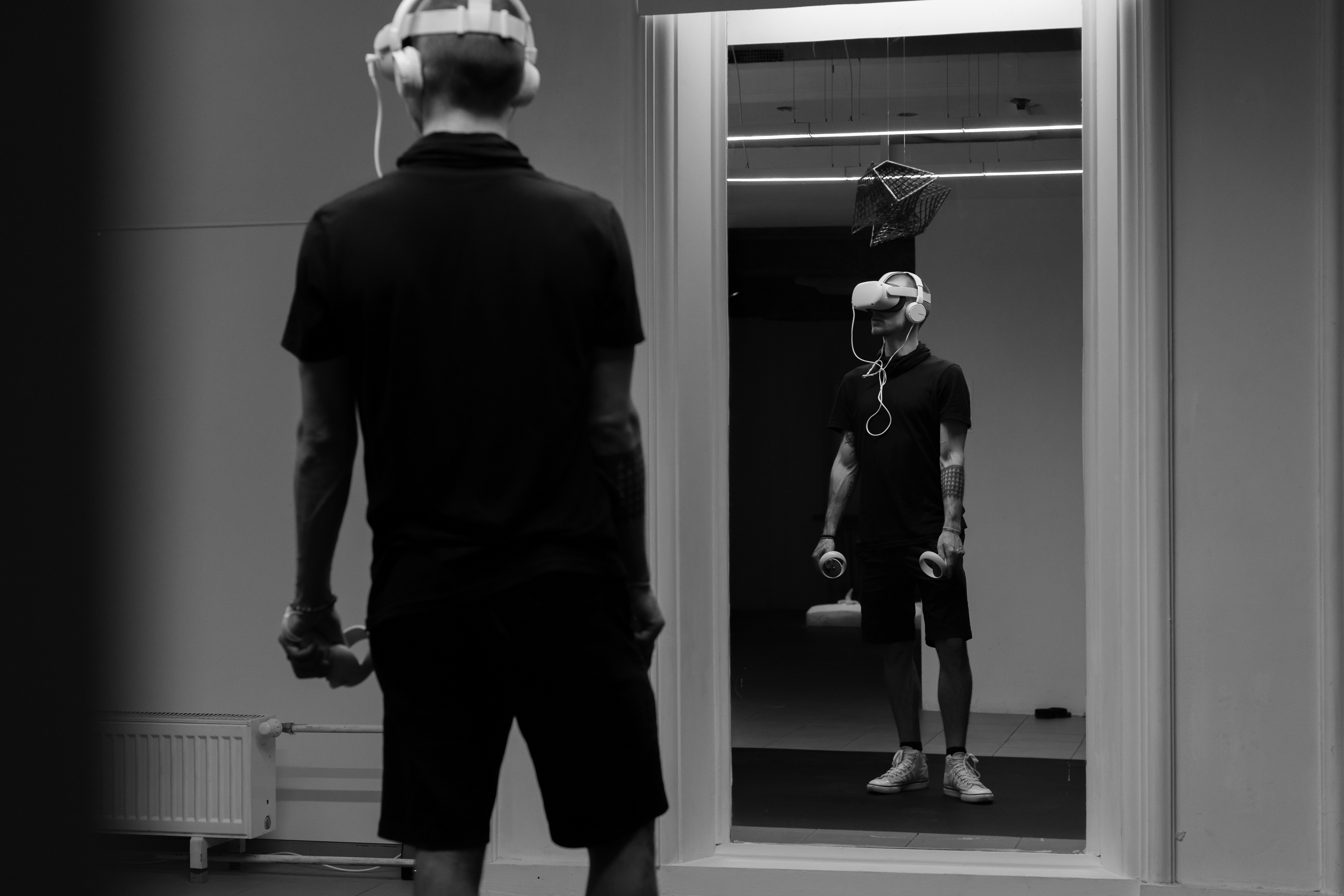
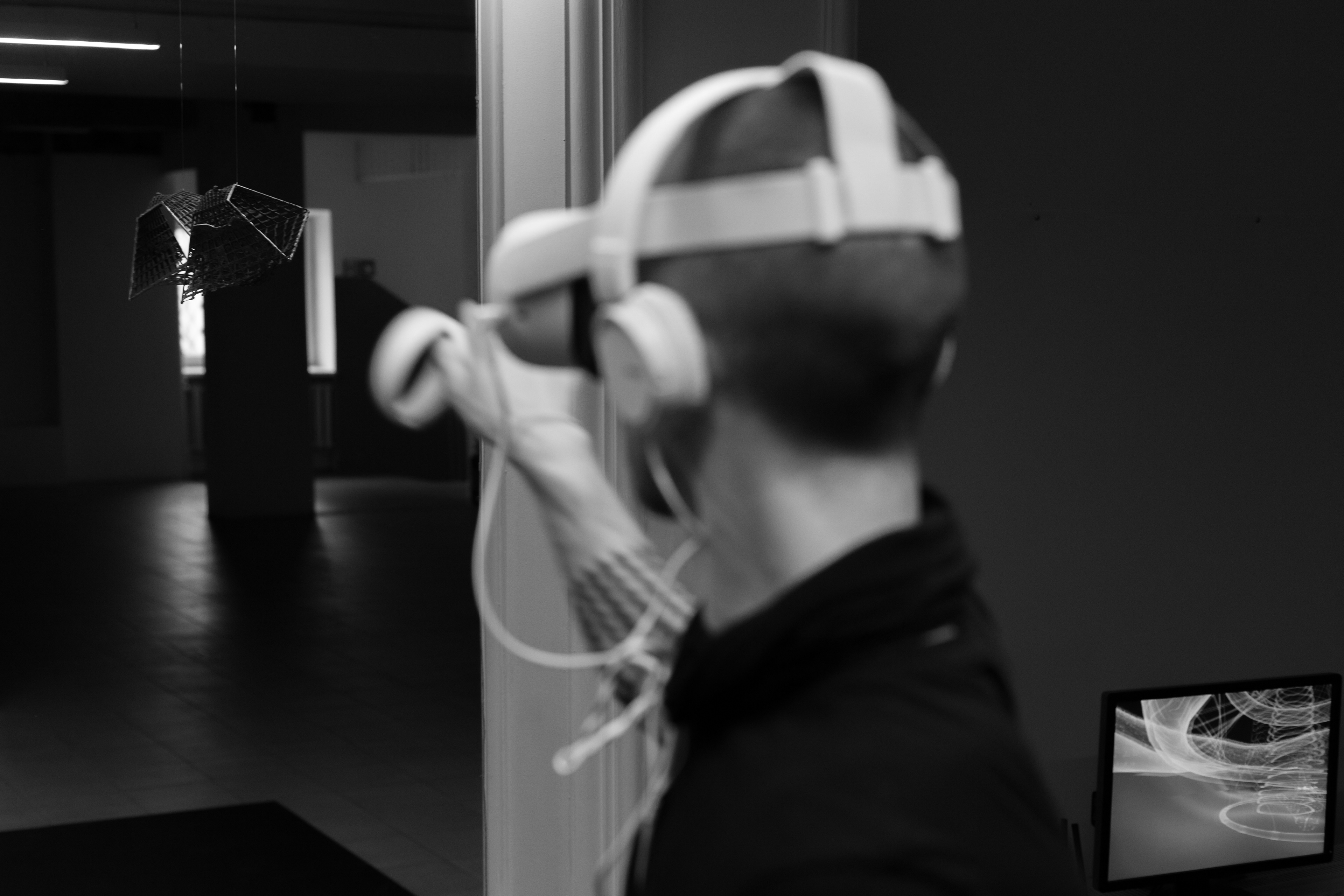
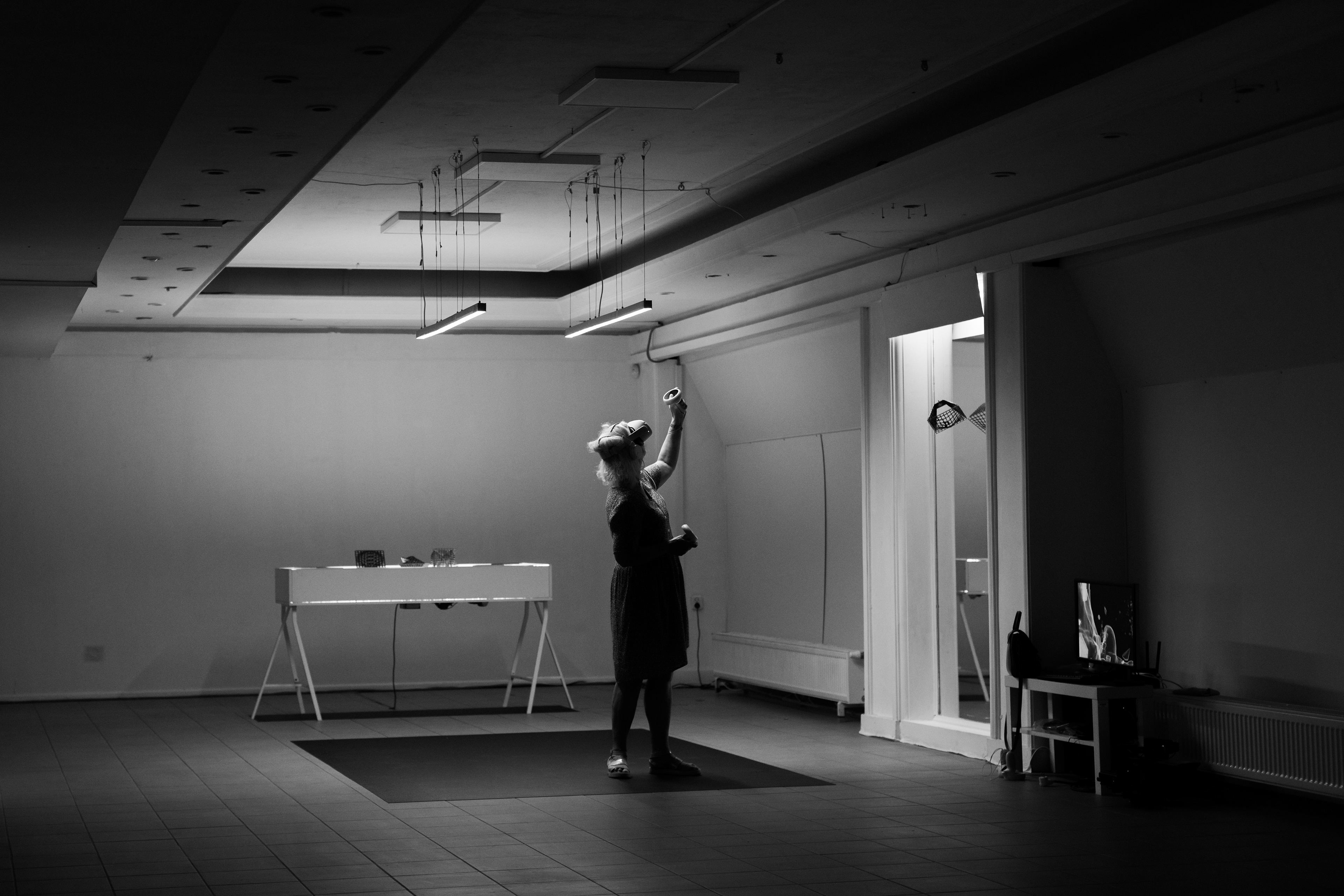
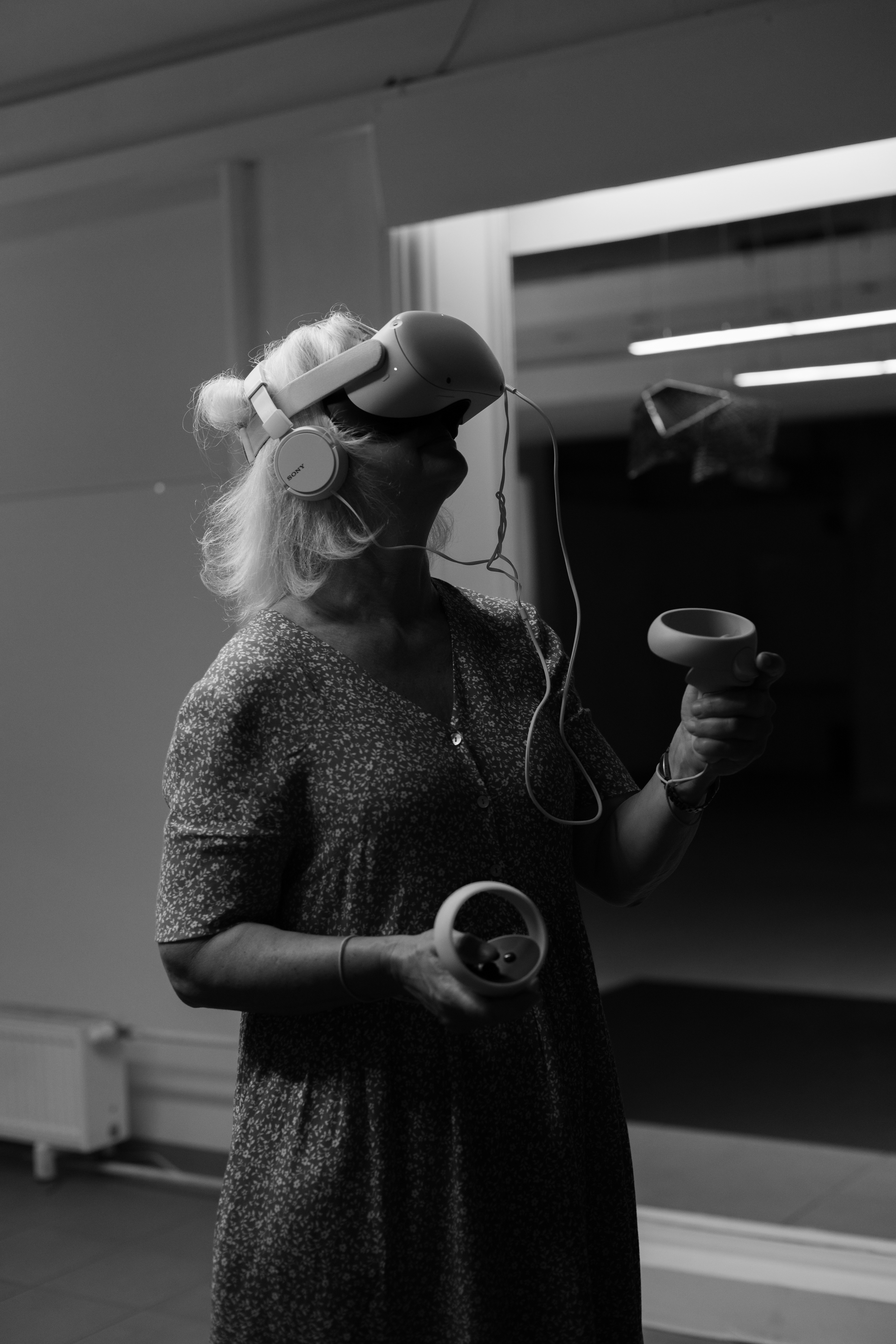

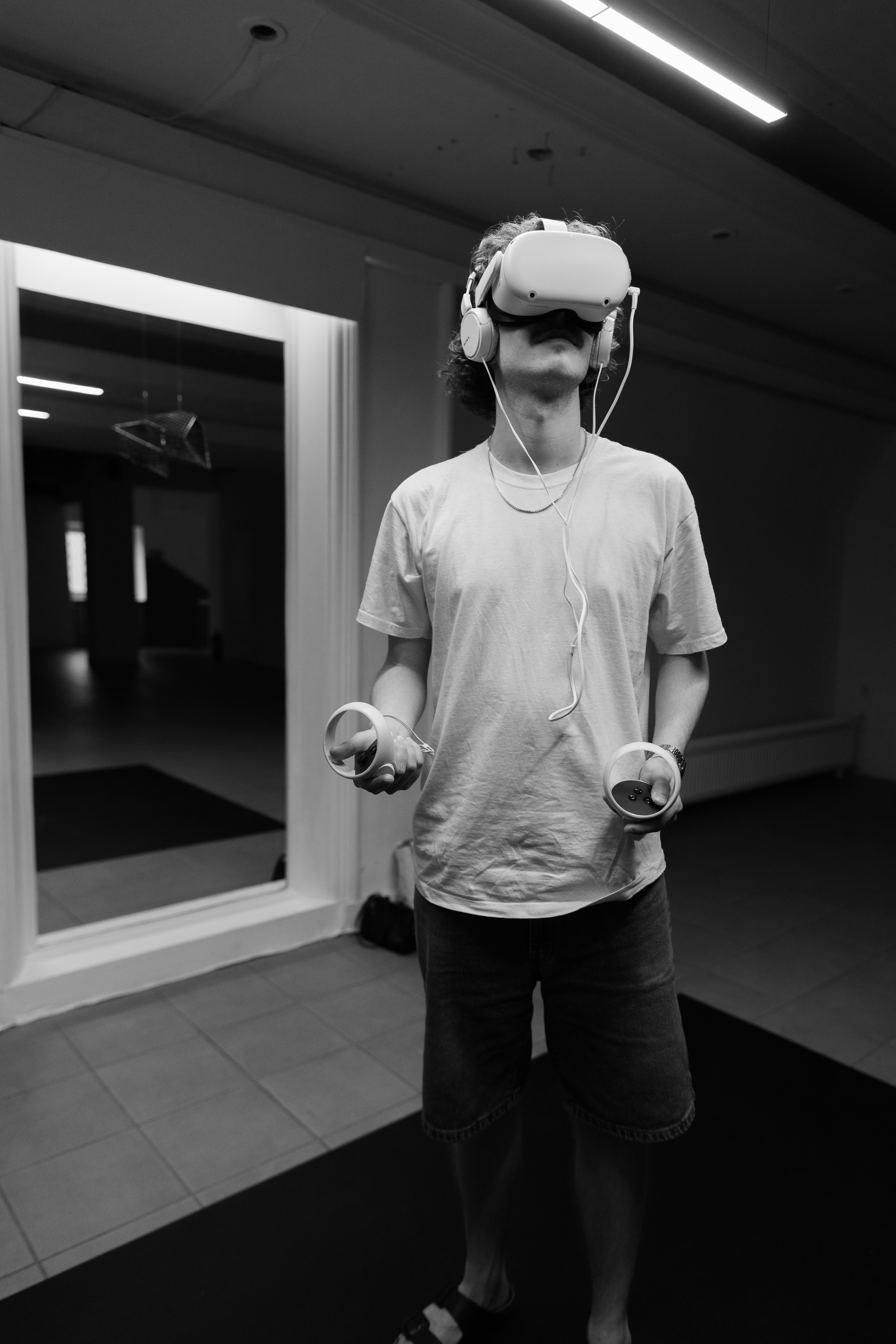
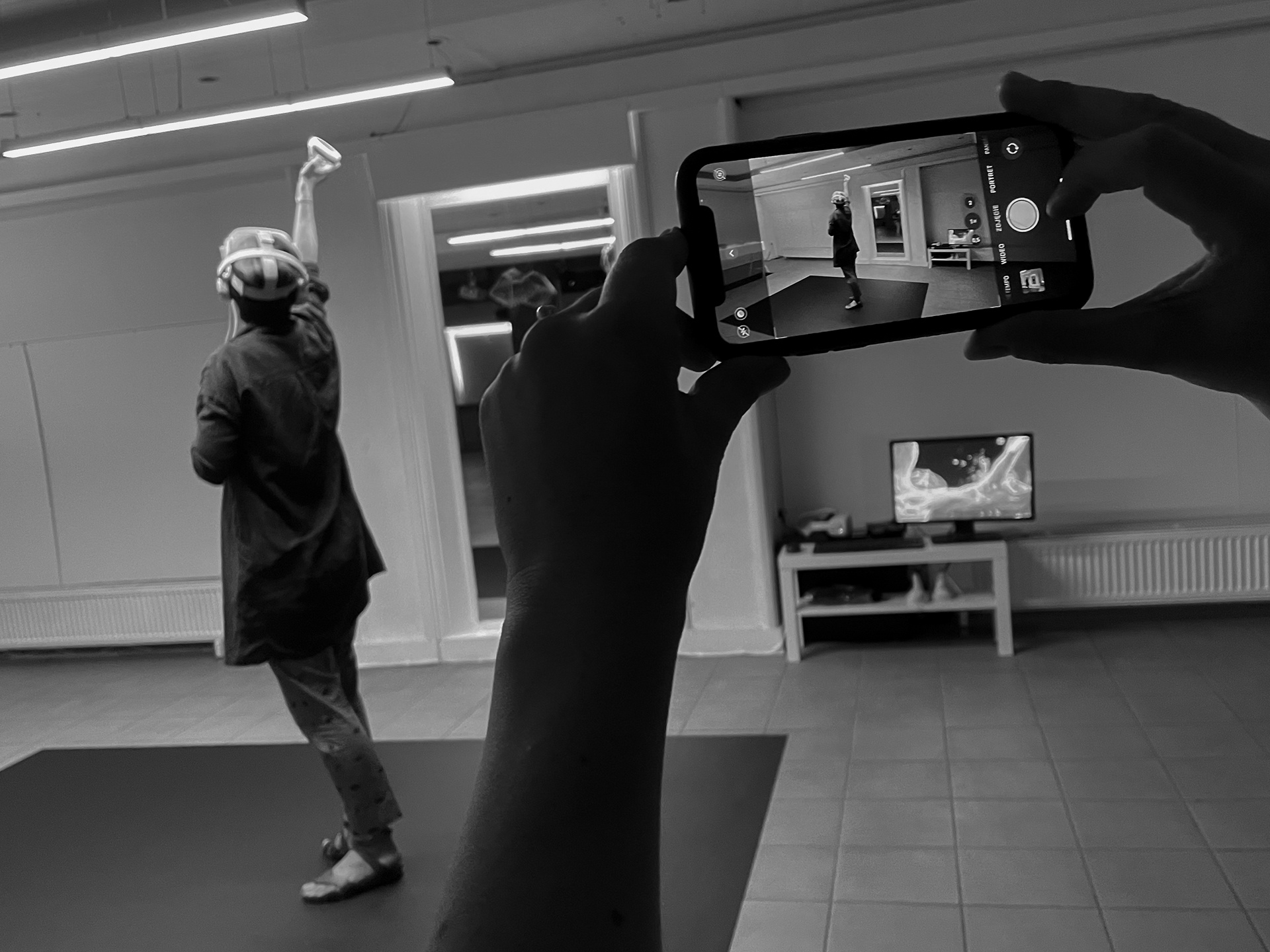
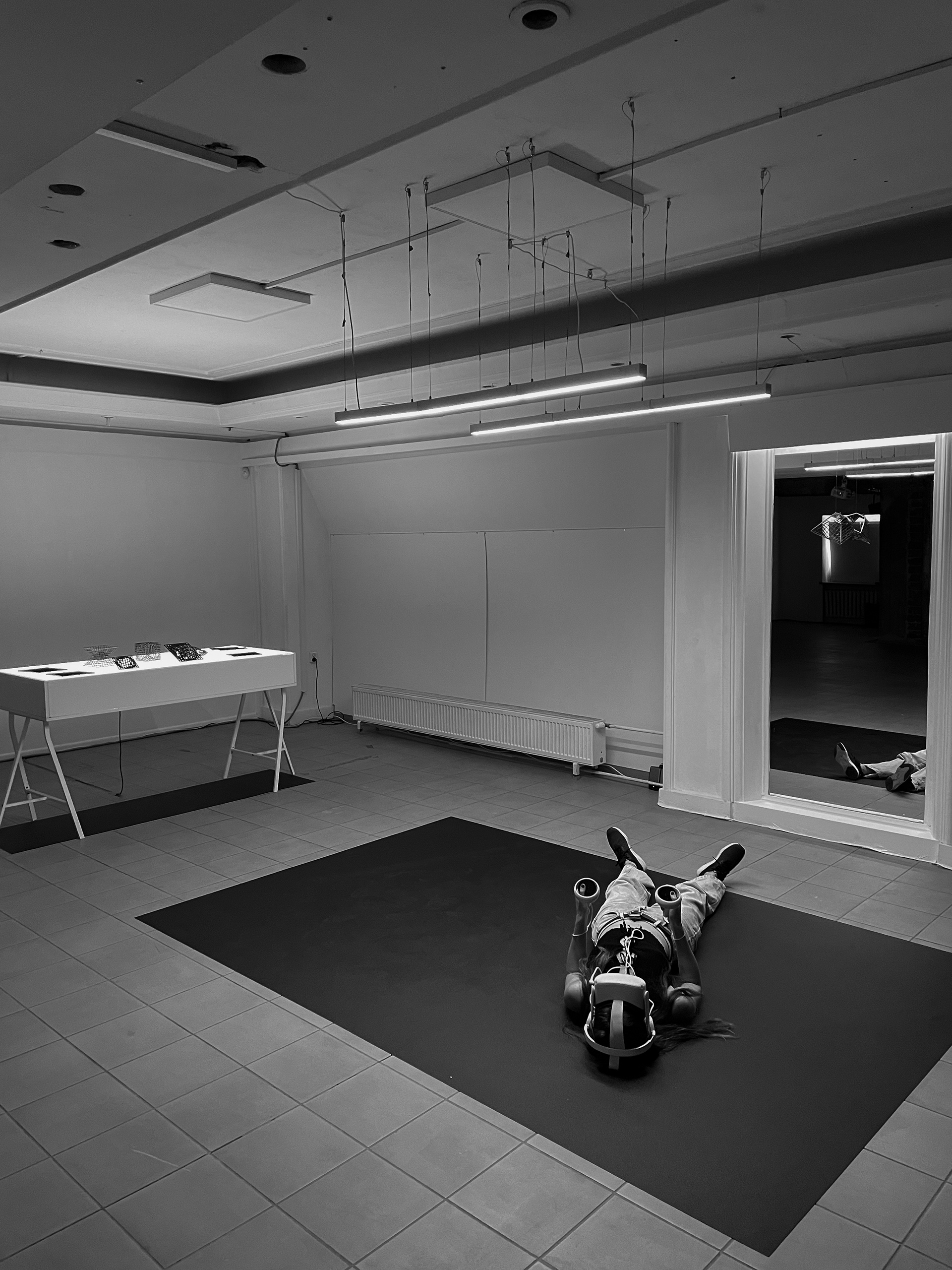
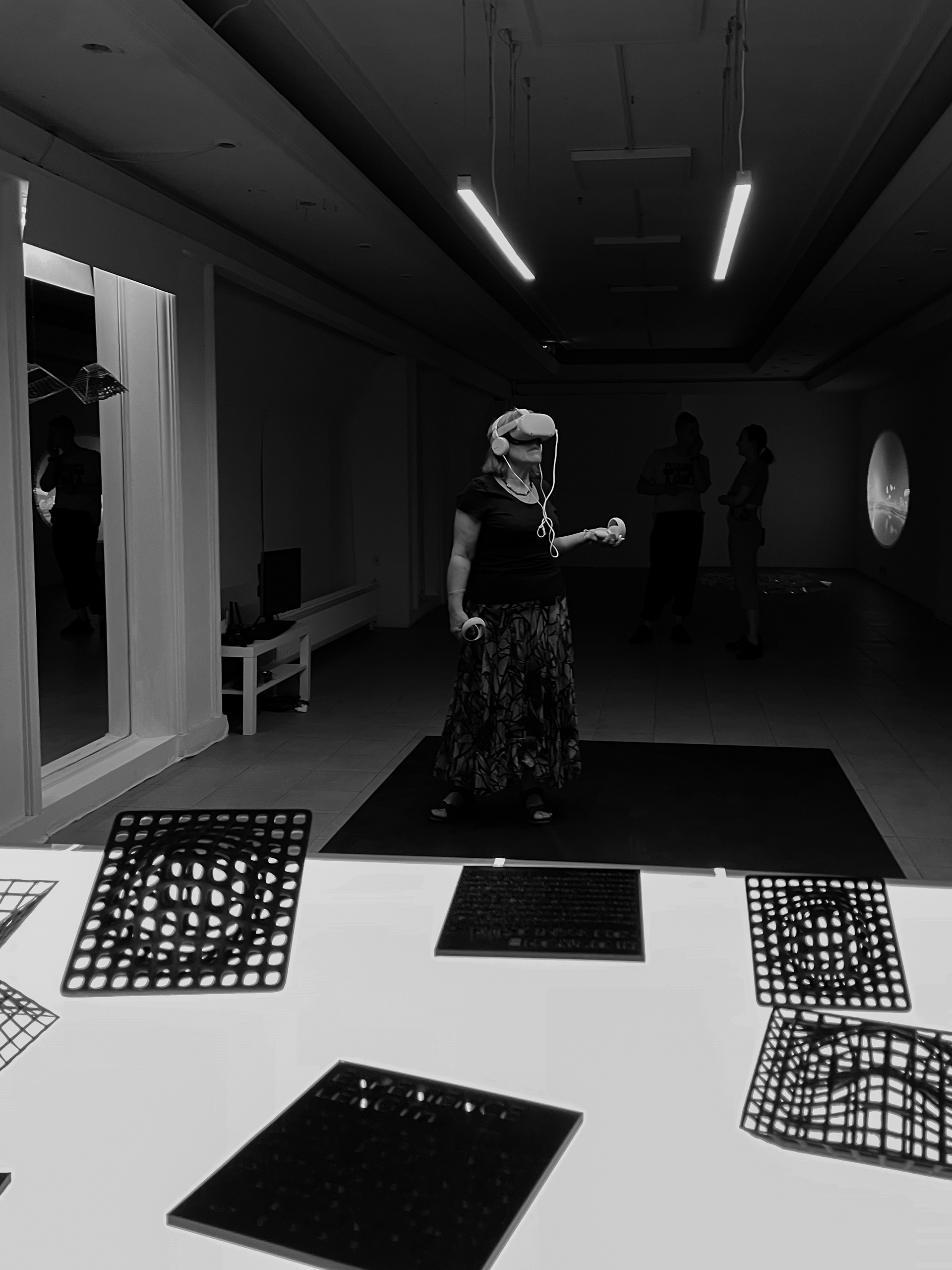
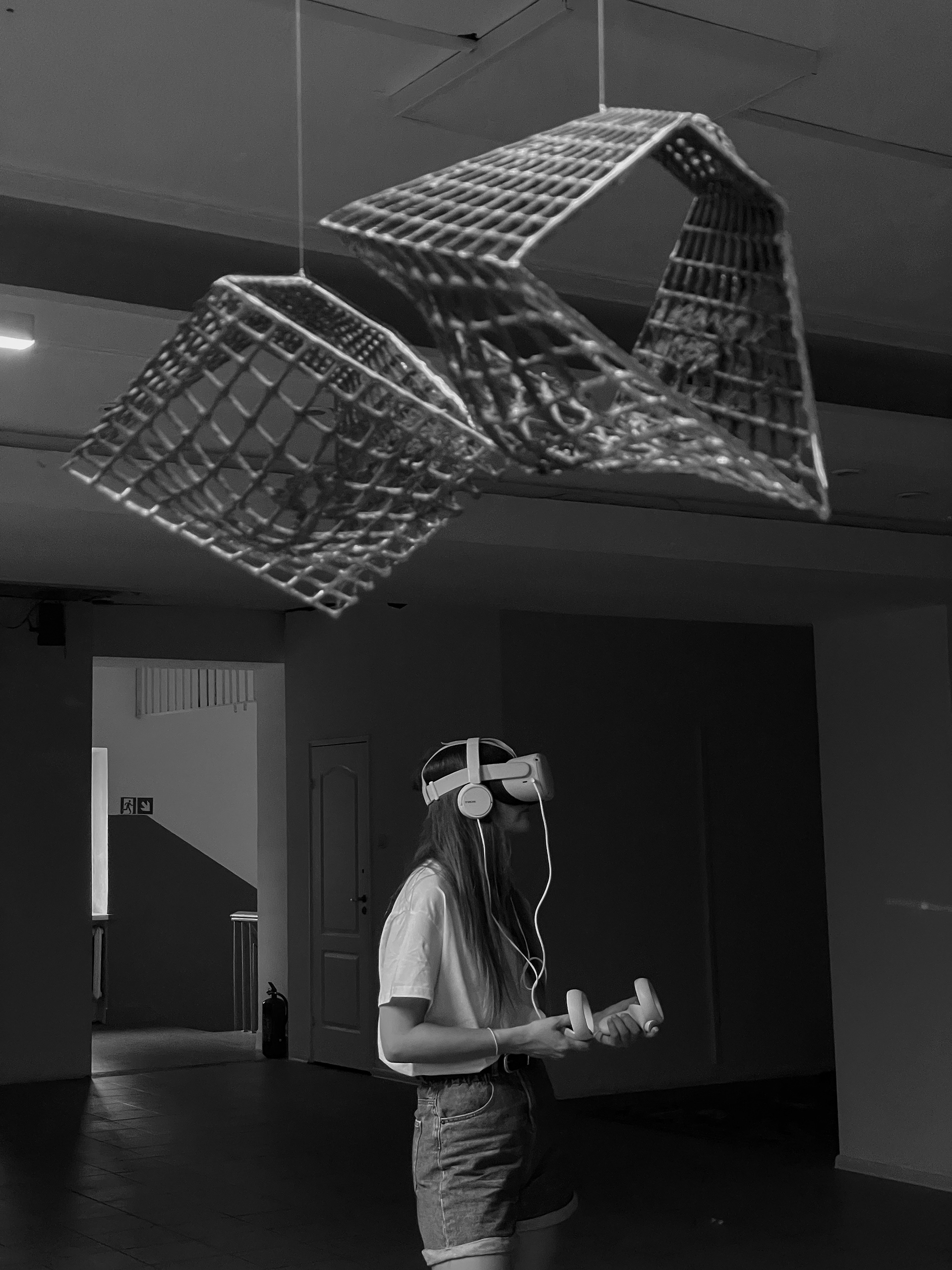
MA diploma made in collaboration with 3D and Virtual Occurances Studio on Academy of Fine Arts in Warsaw,
Special thanks to Jakub Wróblewski, Andrei Isakov and Sebastian Sebulec.